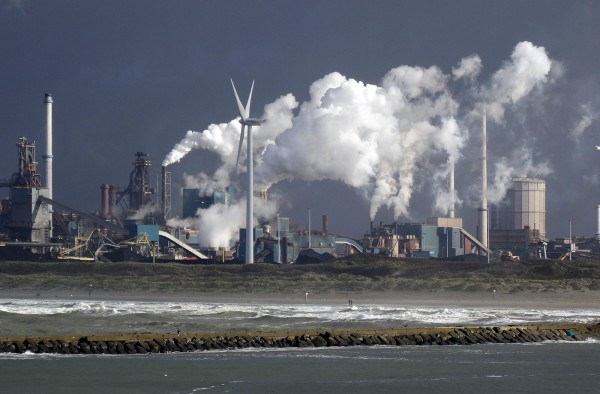 The Paris Climate Change Conference (COP21) is under way. At the opening on November 30, 150 Heads of State gathered in Paris, most of whom addressed the conference. With representatives from 195 countries and observers from a range of organisations, the conference is set to last until 11 December. Optimism is relatively high that a legally binding and universal agreement will be reached, with the aim of keeping global warming below 2°C – what is generally regarded as a ‘safe’ limit.
The Paris Climate Change Conference (COP21) is under way. At the opening on November 30, 150 Heads of State gathered in Paris, most of whom addressed the conference. With representatives from 195 countries and observers from a range of organisations, the conference is set to last until 11 December. Optimism is relatively high that a legally binding and universal agreement will be reached, with the aim of keeping global warming below 2°C – what is generally regarded as a ‘safe’ limit.
But although it is hoped that a successor to the Kyoto Protocol of 1997 will be put in place, there are many problems in getting so many countries to agree. They may all wish to reduce global warming, but there is disagreement on how it should be achieved and how the burden should be shared between countries.
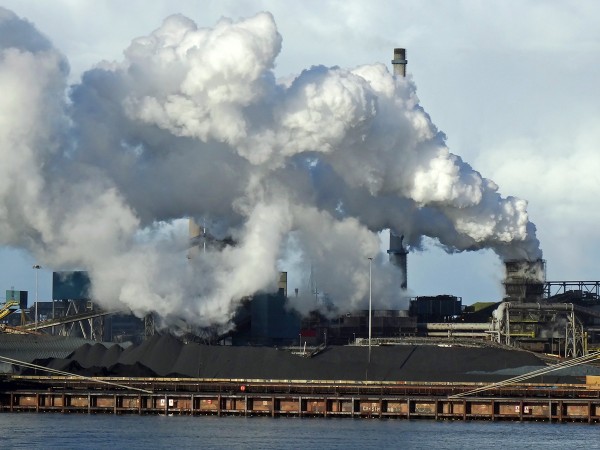 There are several difficult economic issues in the negotiations. The first is the size and impact of the external costs of emissions. When a country burns fossil fuels, the benefits are almost entirely confined to residents of that county. However, the environmental costs are largely external to that country and only a relatively small fraction is borne by that country and hardly at all by the polluters themselves, unless there is a carbon tax or other form or penalty in place. The problem is that the atmosphere is a common resource and without collective action – national or international – it will be overused.
There are several difficult economic issues in the negotiations. The first is the size and impact of the external costs of emissions. When a country burns fossil fuels, the benefits are almost entirely confined to residents of that county. However, the environmental costs are largely external to that country and only a relatively small fraction is borne by that country and hardly at all by the polluters themselves, unless there is a carbon tax or other form or penalty in place. The problem is that the atmosphere is a common resource and without collective action – national or international – it will be overused.
The second problem is one of distribution. Politicians may agree in principle that a solution is necessary which is equitable between nations, but there is considerable disagreement on what is meant by ‘equitable’ in this context. As the third Guardian article below puts it:
The most important hurdle could be over whether industrialised countries like the US, UK and Japan, which have contributed the most to the historical build-up of emissions, should be obliged to cut more than developing countries. India, on behalf of many poor countries, will argue that there must be “differentiation” between rich and poor; but the US wants targets that are applicable to all. A collision is inevitable.
A third problem is that of uncertainty. Although there is general agreement among scientists that human action is contributing to global warming, there is less agreement on the precise magnitude of the causal relationships. There is also uncertainty over the likely effects of specific emissions reductions. This uncertainty can then be used by governments which are unwilling to commit too much to emissions reductions.
 A fourth difficulty arises from the intertemporal distribution of costs and benefits of emissions reductions. The costs are born immediately action is taken. Carbon taxes or charges, or subsidies to renewables, or caps on emissions, all involve higher energy prices and/or higher taxes. The flows of benefits (or lower costs), however, of reduced emissions are not likely to be fully experienced for a very long time. But governments, whether democratic or dictatorships, tend to have a relatively short time horizon, governed by the electoral cycle or the likelihood of staying in power. True, governments may not be solely concerned with power and many politicians may have genuine desires to tackle climate change, but their political survival is still likely to be a major determinant of their actions.
A fourth difficulty arises from the intertemporal distribution of costs and benefits of emissions reductions. The costs are born immediately action is taken. Carbon taxes or charges, or subsidies to renewables, or caps on emissions, all involve higher energy prices and/or higher taxes. The flows of benefits (or lower costs), however, of reduced emissions are not likely to be fully experienced for a very long time. But governments, whether democratic or dictatorships, tend to have a relatively short time horizon, governed by the electoral cycle or the likelihood of staying in power. True, governments may not be solely concerned with power and many politicians may have genuine desires to tackle climate change, but their political survival is still likely to be a major determinant of their actions.
Of course, if there is strong public opinion in favour of action to reduce emissions, governments are likely to respond to this. Indeed, all the expressions of public support for action ahead of the conference from all around the world, do give some hope for a strong agreement at the Paris conference. Nevertheless, there is still widespread scepticism in many countries over the relationship between human action and climate change, and many argue that the costs of policies to tackle climate change exceed the benefits.
Game theory can shed some insights into the difficulties ahead for the negotiators. The global optimum may be for a strong agreement, binding on all countries. The Nash equilibrium, however, may be a situation where countries push for their own interests at the expense of others, with the final agreement being much more minimalistic.
There do, however, seem to be more reasons to be cheerful at this summit that at previous ones. But negotiations are likely to be hard and protracted over the coming days.
Videos and webcasts
 Paris Climate Conference: The Big Picture Wall Street Journal on YouTube, Jason Bellini (30/11/15)
Paris Climate Conference: The Big Picture Wall Street Journal on YouTube, Jason Bellini (30/11/15)
 Why is the Paris UN climate summit important? PwC, Leo Johnson (14/10/15)
Why is the Paris UN climate summit important? PwC, Leo Johnson (14/10/15)
 Paris climate change summit 2015: ‘the near impossible task’ Channel 4 News on YouTube, Tom Clarke (30/11/15)
Paris climate change summit 2015: ‘the near impossible task’ Channel 4 News on YouTube, Tom Clarke (30/11/15)
 COP21: Rallies mark start of Paris climate summit BBC News, David Shukman (29/11/15)
COP21: Rallies mark start of Paris climate summit BBC News, David Shukman (29/11/15)
 With climate at ‘breaking point’, leaders urge breakthrough in Paris Reuters, Bruce Wallace and Alister Doyle (1/12/15)
With climate at ‘breaking point’, leaders urge breakthrough in Paris Reuters, Bruce Wallace and Alister Doyle (1/12/15)
 COP21: Paris conference could be climate turning point, says Obama BBC News (30/11/15)
COP21: Paris conference could be climate turning point, says Obama BBC News (30/11/15)
 Leaders meet to reach new agreement on climate change BBC News, David Shukman (30/11/15)
Leaders meet to reach new agreement on climate change BBC News, David Shukman (30/11/15)
Poll: Growing Doubts Over Climate Change Causes Sky News, Thomas Moore (30/11/15)
 Paris climate protesters banned but 10,000 shoes remain The Guardian (29/11/15)
Paris climate protesters banned but 10,000 shoes remain The Guardian (29/11/15)
Articles
COP-21 climate deal in Paris spells end of the fossil era The Telegraph, Ambrose Evans-Pritchard (29/11/15)
Is there an economic case for tackling climate change? BBC News, Andrew Walker (28/11/15)
World Leaders in Paris Vow to Overcome Divisions on Climate Change Wall Street Journal, William Horobin and William Mauldin (30/11/15)
Experts discuss how to build a carbon-free energy industry The Guardian, Tim Smedley (25/11/15)
Africa could lead world on green energy, says IEA head The Guardian, Anna Leach (11/11/15)
Climate change talks: five reasons to be cheerful or fearful The Guardian, John Vidal (30/11/15)
The Paris climate change summit, explained in 4 charts The Washington Post, Philip Bump (30/11/15)
Why This Goal To Curb Climate Change ‘Is Not Ideal’ Huffington Post, Jacqueline Howard (30/11/15)
Paris climate change talks: What the different groups attending expect from these crucial meetings Independent, Tom Bawden (29/11/15)
UN Climate Change Conference: World Leaders Call For Price On CO2 Emissions Despite Uphill Battle At Paris Summit International Business Times, Maria Gallucci (30/11/15)
World Bank, six nations call for a price on carbon SBS (Australia) (1/12/15)
Uruguay makes dramatic shift to nearly 95% electricity from clean energy The Guardian, Jonathan Watts (3/12/15)
Questions
- Why is COP21 considered to be so significant?
- For what reasons is there hope for a binding agreement to limit global warming to 2°C?
- What would be the effect on global warming of the commitments made by more than 180 countries prior to the conference?
- What market failings contribute towards the problem of global warming?
- Why, if all countries want to achieve a binding agreement at the Paris conference, is it likely to be so difficult to achieve?
- Explain what is meant by a ‘Nash equilibrium’ and how the concept is relevant to international negotiations.
- Why is China investing heavily in solar power?
- Could Africa lead the world in green energy?
- Is a ‘cap and trade’ (tradable permits) system (a) an effective means of reducing emissions; (b) an efficient system?
- What is the best way of financing investment in renewable energy?
- How does the structure/order of the Paris conference differ from previous COPs? Is such a structure more likely to achieve substantial results?
 At the G7 conference in Bavaria on 7 and 8 June 2015, it was agreed to phase out the use of fossil fuels by the end of the century. But despite this significant objective, there were no short-term measures put in place to start on the process of achieving this goal. Nevertheless, the agreement contained commitments to further developments in carbon markets, elimination of fossil fuel subsidies, incentives for the development of green energy and support for developing countries in reducing hydrofluorocarbons.
At the G7 conference in Bavaria on 7 and 8 June 2015, it was agreed to phase out the use of fossil fuels by the end of the century. But despite this significant objective, there were no short-term measures put in place to start on the process of achieving this goal. Nevertheless, the agreement contained commitments to further developments in carbon markets, elimination of fossil fuel subsidies, incentives for the development of green energy and support for developing countries in reducing hydrofluorocarbons.
The agreement also sent a strong message to the 21st United Nations International Climate Change conference scheduled to meet in Paris from 30 November to 11 December 2015. The G7 communiqué states that binding rules would be required if the target was to be met.
The agreement should enhance transparency and accountability including through binding rules at its core to track progress towards achieving targets, which should promote increased ambition over time. This should enable all countries to follow a low-carbon and resilient development pathway in line with the global goal to hold the increase in global average temperature below 2°C.
But many environmentalists argue that a more fundamental approach is needed. This requires a change in the way the environment is perceived – by both individuals and politicians. The simple  selfish model of consumption to maximise consumer surplus and production to maximise profit should be rejected. Instead, the environment should be internalised into decision making.
selfish model of consumption to maximise consumer surplus and production to maximise profit should be rejected. Instead, the environment should be internalised into decision making.
What is more, there should be an integral ecology which brings together a wide range of disciplines, including economics, in analysing the functioning of societies and economies. Rather than being seen merely as a resource to be exploited, respect and care for the environment should be incorporated into our whole decision-making process, along with protecting societies and cultures, and rejecting economic systems that result in a growing divide between rich and poor.
In his latest encyclical, On care for our common home, Pope Francis considers integral ecology, not just in terms of a multidiciplinary approach to the environment but as an approach that integrates the objectives of social justice and care for the environment into an overarching approach to the functioning of societies and economies. And central to his message is the need to change the way human action is perceived at a personal level. Decision making should be focused on care for others and the environment not on the selfish pursuit of individual gain.
 With a change in heart towards other people and the environment, what would be seen as externalities in simple economic models based on rational self-interested behaviour become internal costs or benefits. Care and compassion become the drivers for action, rather than crude self interest.
With a change in heart towards other people and the environment, what would be seen as externalities in simple economic models based on rational self-interested behaviour become internal costs or benefits. Care and compassion become the drivers for action, rather than crude self interest.
A key question, of course, is how we get here to there; how society can achieve a mass change of heart. For religious leaders, such as the Pope, the approach centres on spiritual guidance. For the secular, the approach would probably centre on education and the encouragement for people to consider others in their decision making. But, of course, there is still a major role for economic instruments, such as taxes and subsidies, rules and regulations, and public investment.
Articles
G7 leaders agree to phase out fossil fuels by end of centuryEU Observer, Peter Teffer (8/6/15)
Integral Ecology Approach Links ‘Welfare of God’s People and God’s Creation’ Catholic Register (11/6/15)
President’s Corner Teilhard Perspective, John Grim (May 2015)
In his encyclical on climate change Pope Francis reveals himself to be a master of scientific detail Washington Post, Anthony Faiola, Michelle Boorstein and Chris Mooney (18/6/15)
Pope Francis Calls for Climate Action in Draft of Encyclical New York Times, Jim Yardley (15/6/15)
Pope Francis letter on climate change leaked: Draft Vatican encyclical released three days early Independent, Kashmira Gander and Michael Day (15/6/15)
The Pope is finally addressing the gaping hole in the Judaeo-Christian moral tradition Independent, Michael McCarthy (15/6/15)
Pope Francis warns of destruction of Earth’s ecosystem in leaked encyclical The Guardian, Stephanie Kirchgaessner and John Hooper (16/6/15)
Explosive intervention by Pope Francis set to transform climate change debate The Observer, John Vidal (13/6/15)
Pope Francis’ Leaked Encyclical Draft Attributes Climate Change To Human Activity Huffington Post, Antonia Blumberg (15/6/15)
Pope Francis’ Integral Ecology Huffington Post, Dave Pruett (28/5/15)
Videos
 Pope Francis: Climate change mostly man-made BBC News, Caroline Wyatt (18/6/15)
Pope Francis: Climate change mostly man-made BBC News, Caroline Wyatt (18/6/15)
 Pope urges action on global warming in leaked document BBC News, Chris Cook (16/6/15)
Pope urges action on global warming in leaked document BBC News, Chris Cook (16/6/15)
Questions
- What do you understand by ‘integral ecology’?
- Is an integrated approach to the environment and society consistent with ‘rational’ behaviour (a) in the narrow sense of ‘rational’ as used in consumer and producer theory; (b) in a broader sense of making actions consistent with goals?
- Can cost–benefit analysis be used in the context of an integrated and cross-disciplinary approach to the environment and society?
- What types of incentives would be useful in achieving the approach proposed by Pope Francis?
- Why do many companies publicly state that they pursue a policy of corporate responsibiliy?
- To what extent does it make sense to set targets for the end of this century?
- In what crucial ways might GDP need to be adjusted if it is to be used as a measure of the success of the approach to society, the economy and the environment as advocated by Pope Francis?
 Climate change is a global issue and reports indicate that more and more people are concerned about buying environmentally friendly products. We have seen tighter emissions targets and companies across the word investing in new technologies to reduce their emissions. But what can the Church of England do?
Climate change is a global issue and reports indicate that more and more people are concerned about buying environmentally friendly products. We have seen tighter emissions targets and companies across the word investing in new technologies to reduce their emissions. But what can the Church of England do?
The Church of England has numerous investments, which help generate its revenue. Some of these investments are in fossil fuel companies, which are extracting resources and polluting the environment. The Church’s new environmental policy will see it selling any of its investments in companies where more than 10% of its revenue is generated from extracting thermal coal or the production of oil from tar sands. Estimates suggest that this is a total of £12 million. The Deputy Chair of the Church’s Ethical Investment Advisory Group (EIAG) said:
“The Church has a moral responsibility to speak and act on both environmental stewardship and justice for the world’s poor who are most vulnerable to climate change … This responsibility encompasses not only the Church’s own work to reduce our own carbon footprint, but also how the Church’s money is invested and how we engage with companies on this vital issue.”
However, some have seen this as ‘trivial act’, suggesting it will have limited effect on the environment and have criticised some for suggesting that the biggest moral issue facing the world is climate change. But, with more companies recognising their ‘moral responsibility’, perhaps this decision by the Church of England is unsurprising. The following articles consider this topic.
Church of England divests from coal, tar sands as adopts new climate change policy Reuters (30/4/15)
Church of England wields its influence in fight against climate change The Guardian, Damian Carrington (1/5/15)
Church of England Bishop provokes anger by saying the biggest moral issue affecting the world is … CLIMATE CHANGE Mail Online, Steve Doughty (2/5/15)
Church of England to sell fossil fuel investments BBC News (1/5/15)
Church of England blacklists coal and tar sands investments Financial Times, Pilita Clark (30/4/15)
Church of England ends investments in heavily polluting fossil fuels The Guardian, Adam Vaughan (30/4/15)
Church of England pulls out of fossil fuels, but where does it invest its cash? Independent, Hazel Shefield (1/5/15)
Questions
- Why is climate change a global issue?
- How might the Church of England’s decision affect environmental policy in fossil fuel companies?
- What other action has the Church of England taken to tackle climate change?
- The Church and the articles suggest that the poor are the most vulnerable to climate change. Why is this?
- Do you think the Church of England will lose money by divesting itself of some of these investments?
- If the Church of England now has more money to invest, which factors might influence its decision as to where it should invest?
- Where does the Church of England get its money from? What does it spend it on?
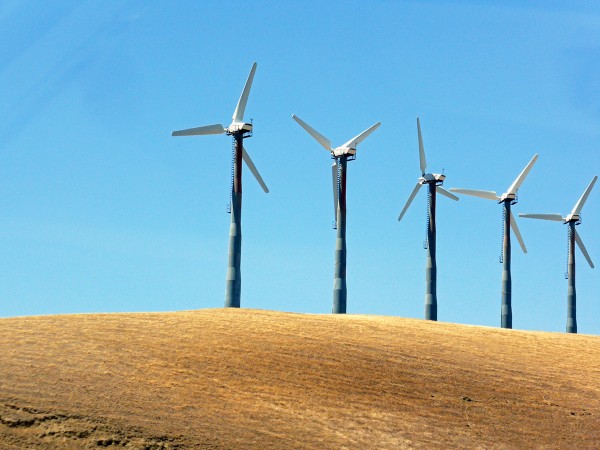 The Governor of California, Jerry Brown, has issued an executive order to cut greenhouse gas emissions 40% from 1990 levels by 2030 (a 44% cut on 2012 levels). This matches the target set by the EU. It is tougher than that of the US administration, which has set a target of reducing emissions in the range of 26 to 28 percent below 2005 levels by 2025.
The Governor of California, Jerry Brown, has issued an executive order to cut greenhouse gas emissions 40% from 1990 levels by 2030 (a 44% cut on 2012 levels). This matches the target set by the EU. It is tougher than that of the US administration, which has set a target of reducing emissions in the range of 26 to 28 percent below 2005 levels by 2025.
The former Governor of California, Arnold Schwarzenegger, had previously set a target of reducing emissions 80% below 1990 levels by 2050. Brown’s new target can be seen as an interim step toward meeting that longer-term goal.
There are several means by which it is planned to meet the Californian targets. These include:
a focus on zero- and near-zero technologies for moving freight, continued investment in renewables including solar roofs and distributed generation, greater use of low-carbon fuels including electricity and hydrogen, stronger efforts to reduce emissions of short-lived climate pollutants (methane, black carbon and fluorinated gases), and further efforts to create liveable, walkable communities and expansion of mass transit and other alternatives to travelling by car.
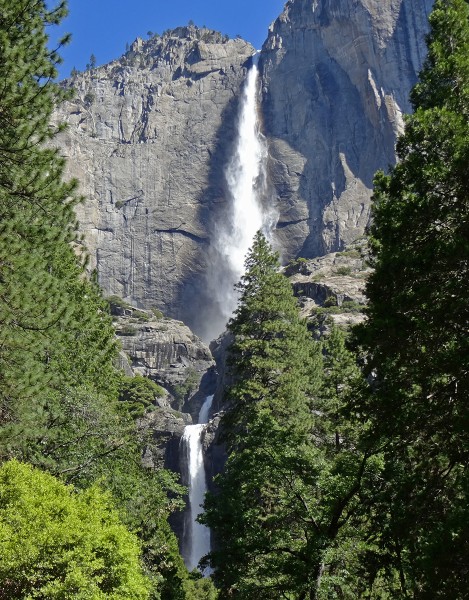 Some of these will be achieved through legislation, after consultations with various stakeholders. But a crucial element in driving down emissions is the California’s carbon trading scheme. This is a cap-and-trade system, similar to the EU’s Emissions Trading Scheme.
Some of these will be achieved through legislation, after consultations with various stakeholders. But a crucial element in driving down emissions is the California’s carbon trading scheme. This is a cap-and-trade system, similar to the EU’s Emissions Trading Scheme.
The cap-and-trade rules came into effect on January 1, 2013 and apply to large electric power plants and large industrial plants. In 2015, they will extend to fuel distributors (including distributors of heating and transportation fuels). At that stage, the program will encompass around 360 businesses throughout California and nearly 85 percent of the state’s total greenhouse gas emissions.
Under a cap-and-trade system, companies must hold enough emission allowances to cover their emissions, and are free to buy and sell allowances on the open market. California held its first auction of greenhouse gas allowances on November 14, 2012. This marked the beginning of the first greenhouse gas cap-and-trade program in the United States since the group of nine Northeastern states in the Regional Greenhouse Gas Initiative (RGGI), a greenhouse gas cap-and-trade program for power plants, held its first auction in 2008.
Since January 2014, the Californian cap-and-trade scheme has been linked to that of Quebec in Canada and discussions are under way to link it with Ontario too. Also California is working with other west-coast states/provinces, Oregon, Washington and British Columbia, to develop a co-ordinated approach to greenhouse gas reductions
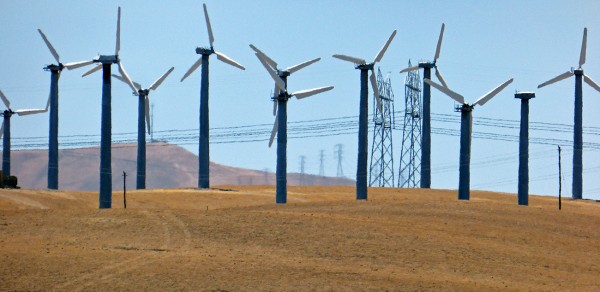 To achieve sufficient reductions in emissions, it is not enough merely to have a cap-and-trade system which, through trading, encourages an efficient reduction in emissions. It is important to set the cap tight enough to achieve the targeted reductions and to ensure that the cap is enforced.
To achieve sufficient reductions in emissions, it is not enough merely to have a cap-and-trade system which, through trading, encourages an efficient reduction in emissions. It is important to set the cap tight enough to achieve the targeted reductions and to ensure that the cap is enforced.
In California, emissions allowances are distributed by a mix of free allocation and quarterly auctions. Free allocations account for around 90% of the allocations, but this percentage will decrease over time. The total allowances will decline (i.e. the cap will be tightened) by 3% per year from 2015 to 2020.
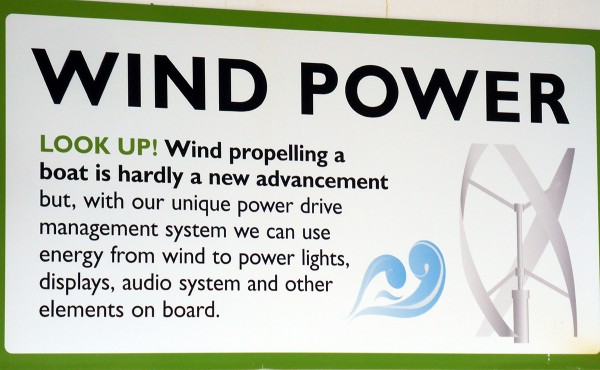 At present the system applies to electric power plants, industrial plants and fuel distributors that emit, or are responsible for emissions of, 25,000 metric tons of carbon dioxide equivalent (CO2e) per year or more. The greenhouse gases covered are the six covered by the Kyoto Protocol ((CO2, CH4, N2O, HFCs, PFCs, SF6), plus NF3 and other fluoridated greenhouse gases.
At present the system applies to electric power plants, industrial plants and fuel distributors that emit, or are responsible for emissions of, 25,000 metric tons of carbon dioxide equivalent (CO2e) per year or more. The greenhouse gases covered are the six covered by the Kyoto Protocol ((CO2, CH4, N2O, HFCs, PFCs, SF6), plus NF3 and other fluoridated greenhouse gases.
Articles
California governor orders aggressive greenhouse gas cuts by 2030 Reuters. Rory Carroll (29/4/15)
California’s greenhouse gas emission targets are getting tougher Los Angeles Times, Chris Megerian and Michael Finnegan (29/4/15)
Jerry Brown sets aggressive California climate goal The Desert Sun, Sammy Roth (29/4/15)
California’s Brown Seeks Nation-Leading Greenhouse Gas Cuts Bloomberg, Michael B Marois (29/4/15)
California sets tough new targets to cut emissions BBC News, (29/4/15)
California’s New Greenhouse Gas Emissions Target Puts Obama’s To Shame New Republic, Rebecca Leber (29/4/15)
Governor Brown Announces New Statewide Climate Pollution Limit in 2030 Switchboard, Alex Jackson (29/4/15)
Cap-and-trade comes to Orego Watchdog, Chana Cox (29/4/15)
Cap and trade explained: What Ontario’s shift on emissions will mean The Globe and Mail, Adrian Morrow (13/4/15)
California’s Forests Have Become Climate Polluters Climate Central, John Upton (29/4/15)
States Can Learn from Each Other On Carbon Pricing The Energy Collective, Kyle Aarons (28/4/15)
Executive Order
Governor Brown Establishes Most Ambitious Greenhouse Gas Reduction Target in North America Office of Edmund G. Brown Jr. (29/4/15)
Frequently Asked Questions about Executive Order B-30-15: 2030 Carbon Target and Adaptation California Environmental Protection Agency: Air Resources Board (29/4/15)
Californian cap-and-trade scheme
Cap-and-Trade Program California Environmental Protection Agency: Air Resources Board (29/4/15)
California Cap and Trade Center for Climate and Energy Solutions (January 2014)
Questions
- Explain how a system of cap-and-trade, such as the Californian system and the ETS in the EU, works.
- Why does a cap-and-trade system lead to an efficient level of emissions reduction?
- How can a joint system, such as that between California and Quebec, work? Is it important to achieve the same percentage pollution reduction in both countries?
- What are countries coming to the United Nations Climate Change conference in Paris in November 2015 required to have communicated in advance?
- How might game theory be relevant to the negotiations in Paris? Are the pre-requirements on countries a good idea to tackle some of the ‘gaming’ problems that could occur?
- Why is a cap-and-trade system insufficient to tackle climate change? What other measures are required?
 Many UK coal mines closed in the 1970s and 80s. Coal extraction was too expensive in the UK to compete with cheap imported coal and many consumers were switching away from coal to cleaner fuels. Today many shale oil producers in the USA are finding that extraction has become unprofitable with oil prices having fallen by some 50% since mid-2014 (see A crude indicator of the economy (Part 2) and The price of oil in 2015 and beyond). So is it a bad idea to invest in fossil fuel production? Could such assets become unusable – what is known as ‘stranded assets‘?
Many UK coal mines closed in the 1970s and 80s. Coal extraction was too expensive in the UK to compete with cheap imported coal and many consumers were switching away from coal to cleaner fuels. Today many shale oil producers in the USA are finding that extraction has become unprofitable with oil prices having fallen by some 50% since mid-2014 (see A crude indicator of the economy (Part 2) and The price of oil in 2015 and beyond). So is it a bad idea to invest in fossil fuel production? Could such assets become unusable – what is known as ‘stranded assets‘?
In a speech on 3 March 2015, Confronting the challenges of tomorrow’s world, delivered at an insurance conference, Paul Fisher, Deputy Governor of the Bank of England, warned that a switch to both renewable sources of energy and actions to save energy could hit investors in fossil fuel companies.
‘One live risk right now is of insurers investing in assets that could be left ‘stranded’ by policy changes which limit the use of fossil fuels. As the world increasingly limits carbon emissions, and moves to alternative energy sources, investments in fossil fuels and related technologies – a growing financial market in recent decades – may take a huge hit. There are already a few specific examples of this having happened.
… As the world increasingly limits carbon emissions, and moves to alternative energy sources, investments in fossil fuels and related technologies – a growing financial market in recent decades – may take a huge hit. There are already a few specific examples of this having happened.’
Much of the known reserves of fossil fuels could not be used if climate change targets are to be met. And investment in the search for new reserves would be of little value unless they were very cheap to extract. But will climate change targets be met?  That is hard to predict and depends on international political agreements and implementation, combined with technological developments in fields such as clean-burn technologies, carbon capture and renewable energy. The scale of these developments is uncertain. As Paul Fisher said in his speech:
That is hard to predict and depends on international political agreements and implementation, combined with technological developments in fields such as clean-burn technologies, carbon capture and renewable energy. The scale of these developments is uncertain. As Paul Fisher said in his speech:
‘Tomorrow’s world inevitably brings change. Some changes can be forecast, or guessed by extrapolating from what we know today. But there are, inevitably, the unknown unknowns which will help shape the future. … As an ex-forecaster I can tell you confidently that the only thing we can be certain of is that there will be changes that no one will predict.’
The following articles look at the speech and at the financial risks of fossil fuel investment. The Guardian article also provides links to some useful resources.
Articles
Bank of England warns of huge financial risk from fossil fuel investments The Guardian, Damian Carrington (3/3/15)
PRA warns insurers on fossil fuel assets Insurance Asset Risk (3/3/15)
Energy trends changing investment dynamics UPI, Daniel J. Graeber (3/3/15)
Speech
Confronting the challenges of tomorrow’s world Bank of England, Paul Fisher (3/3/15)
Questions
- What factors are taken into account by investors in fossil fuel assets?
- Why might a power station become a ‘stranded asset’?
- How is game theory relevant in understanding the process of climate change negotiations and the outcomes of such negotiations?
- What social functions are filled by insurance?
- Why does climate change impact on insurers on both sides of their balance sheets?
- What is the Prudential Regulation Authority (PRA)? What is its purpose?
- Explain what is meant by ‘unknown unknowns’. How do they differ from ‘known unknowns’?
- How do the arguments in the article and the speech relate to the controversy about investing in fracking in the UK?
- Explain and comment on the statement by World Bank President, Jim Yong Kim, that sooner rather than later, financial regulators must address the systemic risk associated with carbon-intensive activities in their economies.
 The Paris Climate Change Conference (COP21) is under way. At the opening on November 30, 150 Heads of State gathered in Paris, most of whom addressed the conference. With representatives from 195 countries and observers from a range of organisations, the conference is set to last until 11 December. Optimism is relatively high that a legally binding and universal agreement will be reached, with the aim of keeping global warming below 2°C – what is generally regarded as a ‘safe’ limit.
The Paris Climate Change Conference (COP21) is under way. At the opening on November 30, 150 Heads of State gathered in Paris, most of whom addressed the conference. With representatives from 195 countries and observers from a range of organisations, the conference is set to last until 11 December. Optimism is relatively high that a legally binding and universal agreement will be reached, with the aim of keeping global warming below 2°C – what is generally regarded as a ‘safe’ limit. There are several difficult economic issues in the negotiations. The first is the size and impact of the external costs of emissions. When a country burns fossil fuels, the benefits are almost entirely confined to residents of that county. However, the environmental costs are largely external to that country and only a relatively small fraction is borne by that country and hardly at all by the polluters themselves, unless there is a carbon tax or other form or penalty in place. The problem is that the atmosphere is a common resource and without collective action – national or international – it will be overused.
There are several difficult economic issues in the negotiations. The first is the size and impact of the external costs of emissions. When a country burns fossil fuels, the benefits are almost entirely confined to residents of that county. However, the environmental costs are largely external to that country and only a relatively small fraction is borne by that country and hardly at all by the polluters themselves, unless there is a carbon tax or other form or penalty in place. The problem is that the atmosphere is a common resource and without collective action – national or international – it will be overused. A fourth difficulty arises from the intertemporal distribution of costs and benefits of emissions reductions. The costs are born immediately action is taken. Carbon taxes or charges, or subsidies to renewables, or caps on emissions, all involve higher energy prices and/or higher taxes. The flows of benefits (or lower costs), however, of reduced emissions are not likely to be fully experienced for a very long time. But governments, whether democratic or dictatorships, tend to have a relatively short time horizon, governed by the electoral cycle or the likelihood of staying in power. True, governments may not be solely concerned with power and many politicians may have genuine desires to tackle climate change, but their political survival is still likely to be a major determinant of their actions.
A fourth difficulty arises from the intertemporal distribution of costs and benefits of emissions reductions. The costs are born immediately action is taken. Carbon taxes or charges, or subsidies to renewables, or caps on emissions, all involve higher energy prices and/or higher taxes. The flows of benefits (or lower costs), however, of reduced emissions are not likely to be fully experienced for a very long time. But governments, whether democratic or dictatorships, tend to have a relatively short time horizon, governed by the electoral cycle or the likelihood of staying in power. True, governments may not be solely concerned with power and many politicians may have genuine desires to tackle climate change, but their political survival is still likely to be a major determinant of their actions. Paris Climate Conference: The Big Picture Wall Street Journal on YouTube, Jason Bellini (30/11/15)
Paris Climate Conference: The Big Picture Wall Street Journal on YouTube, Jason Bellini (30/11/15) Why is the Paris UN climate summit important? PwC, Leo Johnson (14/10/15)
Why is the Paris UN climate summit important? PwC, Leo Johnson (14/10/15) Paris climate change summit 2015: ‘the near impossible task’ Channel 4 News on YouTube, Tom Clarke (30/11/15)
Paris climate change summit 2015: ‘the near impossible task’ Channel 4 News on YouTube, Tom Clarke (30/11/15) COP21: Rallies mark start of Paris climate summit BBC News, David Shukman (29/11/15)
COP21: Rallies mark start of Paris climate summit BBC News, David Shukman (29/11/15) With climate at ‘breaking point’, leaders urge breakthrough in Paris Reuters, Bruce Wallace and Alister Doyle (1/12/15)
With climate at ‘breaking point’, leaders urge breakthrough in Paris Reuters, Bruce Wallace and Alister Doyle (1/12/15) COP21: Paris conference could be climate turning point, says Obama BBC News (30/11/15)
COP21: Paris conference could be climate turning point, says Obama BBC News (30/11/15) Leaders meet to reach new agreement on climate change BBC News, David Shukman (30/11/15)
Leaders meet to reach new agreement on climate change BBC News, David Shukman (30/11/15) Paris climate protesters banned but 10,000 shoes remain The Guardian (29/11/15)
Paris climate protesters banned but 10,000 shoes remain The Guardian (29/11/15)







